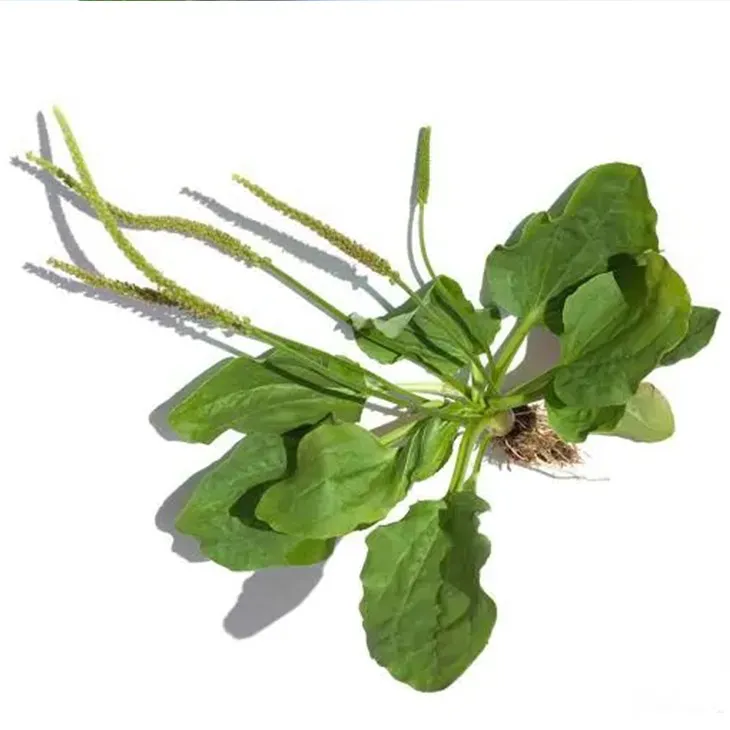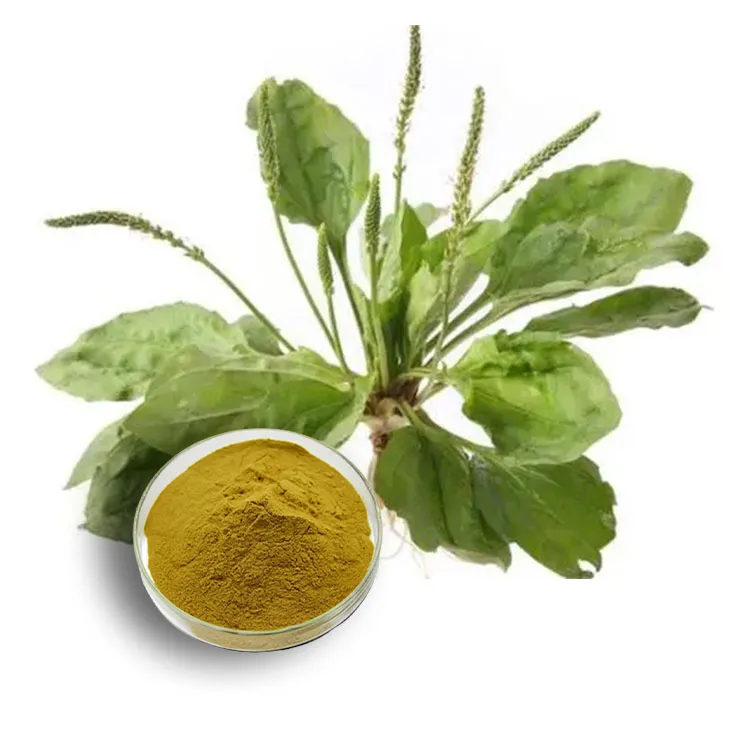- 0086-571-85302990
- sales@greenskybio.com
How to Extract Plantain Extract from Plants?
2024-11-26

1. Introduction
Plantain, a common plant, has been recognized for its various potential benefits. Extracting Plantain extract from plants is a process that requires careful consideration of multiple factors. This article will delve into the details of this extraction process, including the selection of plant parts, different extraction methods, and the role of modern technology.

2. Optimal Plant Parts for Extraction
2.1 Leaves
The leaves of the plantain are often the primary choice for extraction. They are rich in a variety of bioactive compounds. The leaves are relatively easy to harvest and contain a significant amount of the substances that are desired in the extract. For example, they may contain flavonoids, which have antioxidant properties. These flavonoids can be extracted and used in various applications such as in the pharmaceutical and cosmetic industries.
2.2 Seeds
Plantain seeds also hold potential for extraction. They are a source of certain nutrients and bioactive molecules. However, extracting from seeds may be more complex compared to leaves. The seeds are often smaller and may require more elaborate processing methods to ensure efficient extraction. For instance, they might need to be ground into a fine powder before the extraction process can be effectively carried out.

3. Different Extraction Processes
3.1 Solvent Extraction
- Selection of Solvent: The first step in solvent extraction is to choose an appropriate solvent. Common solvents used for Plantain extract extraction include ethanol, methanol, and water. Ethanol is often a popular choice as it can dissolve a wide range of bioactive compounds while being relatively safe and easy to handle. For example, it can effectively extract flavonoids from plantain leaves.
- Preparation of Plant Material: The plantain parts, whether leaves or seeds, need to be properly prepared. This usually involves cleaning the plant material to remove any dirt, debris, or foreign substances. The material may then be dried or used fresh, depending on the requirements of the extraction process. For example, if using dried leaves, they may need to be ground into a powder to increase the surface area for better solvent interaction.
- Extraction Procedure: The plant material is then mixed with the selected solvent in a suitable container. This mixture is typically stirred or shaken for a certain period of time to ensure thorough contact between the solvent and the plant material. The length of time and the intensity of the agitation can vary depending on the nature of the plantain parts and the desired compounds. For example, for a more concentrated extract of certain compounds, a longer extraction time and more vigorous agitation may be required.
- Filtration and Concentration: After the extraction, the mixture is filtered to separate the plant residue from the solvent - containing the extract. Filtration can be done using filter papers or other filtration devices. The filtrate, which contains the Plantain extract, can then be concentrated. Concentration can be achieved through methods such as evaporation under reduced pressure. This helps to increase the concentration of the bioactive compounds in the extract.
3.2 Steam Distillation
- Setup of the Apparatus: Steam distillation requires a specialized apparatus. This includes a steam generator, a distillation flask, a condenser, and a collection vessel. The plantain material, usually in a chopped or ground form, is placed in the distillation flask.
- Steam Generation and Extraction: Steam is generated and passed through the plantain material in the distillation flask. The steam helps to carry the volatile compounds present in the plantain. These volatile compounds are then carried along with the steam into the condenser, where the steam is condensed back into liquid form.
- Separation and Collection: The condensed liquid, which contains the plantain extract along with water, is then collected in the collection vessel. Since the extract and water are immiscible in some cases, they can be separated using methods such as decantation or using a separatory funnel. The plantain extract, which is usually in the form of an essential oil or other volatile compounds, can then be further purified if required.
3.3 Supercritical Fluid Extraction
- Supercritical Fluid Selection: In supercritical fluid extraction, carbon dioxide (CO₂) is often the supercritical fluid of choice for plantain extract extraction. CO₂ in its supercritical state has properties that make it an excellent solvent for many bioactive compounds. It has a relatively low critical temperature and pressure, which means it can be easily manipulated in the extraction process.
- Extraction Conditions: The extraction is carried out under specific conditions of temperature and pressure. These conditions are carefully controlled to ensure that the CO₂ is in its supercritical state. For example, the pressure may be set at around 73.8 bar and the temperature at around 31.1°C for CO₂ to be in its supercritical state. The plantain material is placed in an extraction vessel, and the supercritical CO₂ is passed through it.
- Separation and Collection: After the extraction, the supercritical CO₂ containing the plantain extract is passed through a separator. By changing the pressure or temperature in the separator, the CO₂ can be returned to its gaseous state, leaving behind the plantain extract. The extract can then be collected and further processed if needed.

4. Role of Modern Technology in Enhancing Extraction Efficiency
4.1 Microwave - Assisted Extraction
Microwave - assisted extraction is a modern technique that can significantly enhance the extraction efficiency. The microwave energy is used to heat the plantain material and the solvent rapidly. This rapid heating causes the cells in the plant material to rupture more quickly, releasing the bioactive compounds into the solvent. This method can reduce the extraction time compared to traditional solvent extraction methods. For example, in some cases, the extraction time can be reduced from hours to just a few minutes.
4.2 Ultrasonic - Assisted Extraction
Ultrasonic - assisted extraction utilizes ultrasonic waves to improve the extraction process. The ultrasonic waves create cavitation bubbles in the solvent - plantain material mixture. These bubbles collapse, creating shock waves that help to break down the plant cell walls and enhance the mass transfer of the bioactive compounds from the plant material to the solvent. This method can also increase the extraction yield and reduce the extraction time.
5. Quality Control and Assurance in Plantain Extract Extraction
- Purity Testing: One of the key aspects of quality control is to ensure the purity of the plantain extract. This can be done through various analytical techniques such as high - performance liquid chromatography (HPLC). HPLC can be used to separate and identify the different components in the extract, ensuring that there are no unwanted contaminants or impurities.
- Yield Optimization: Monitoring and optimizing the yield of the plantain extract is also important. By carefully controlling the extraction parameters such as the type of solvent, extraction time, and temperature, the yield can be maximized while maintaining the quality of the extract.
- Safety and Regulatory Compliance: Ensuring that the extraction process and the final extract comply with safety regulations is crucial. This includes following good manufacturing practices (GMP) and ensuring that the extract is free from harmful substances. In the pharmaceutical and food industries, strict regulatory requirements must be met for the use of plantain extract.
6. Conclusion
Extracting plantain extract from plants is a multi - step process that involves careful consideration of plant parts, extraction methods, and the use of modern technology. By optimizing these factors and ensuring quality control, high - quality plantain extract can be obtained for diverse industrial uses, ranging from pharmaceuticals to cosmetics and food products.
FAQ:
What are the optimal plant parts for plantain extract extraction?
The leaves are often considered the optimal plant part for plantain extract extraction. They contain a rich concentration of bioactive compounds. However, in some cases, the seeds or even the roots can also be used depending on the specific properties desired in the extract. For example, if certain types of alkaloids are of interest, the roots might be a more suitable part for extraction.
What are the different extraction processes for plantain extract?
One common method is solvent extraction. This involves using solvents like ethanol or methanol to dissolve the desired compounds from the plantain plant parts. Another process is steam distillation, which is mainly used when extracting essential oils from plantain. Maceration is also used, where the plant parts are soaked in a solvent for a period to allow the extraction of compounds. Supercritical fluid extraction is a more advanced method, often using carbon dioxide in a supercritical state to extract components with high selectivity and purity.
How does modern technology enhance the extraction efficiency of plantain extract?
Modern technology offers several advantages. For instance, the use of advanced machinery in solvent extraction allows for better control of parameters such as temperature, pressure, and extraction time, leading to higher yields. In supercritical fluid extraction, precise control systems ensure that the supercritical carbon dioxide can be adjusted to target specific compounds more effectively. Additionally, automated processes reduce human error and increase the reproducibility of the extraction, which is crucial for industrial - scale production.
What are the industrial uses of plantain extract?
Plantain extract has various industrial uses. In the pharmaceutical industry, it can be used for its medicinal properties such as anti - inflammatory and antibacterial effects. In the cosmetic industry, it is often added to skincare products due to its potential to soothe the skin and reduce irritation. It can also be used in the food industry as a natural flavoring agent or for its potential health - promoting properties.
How can one ensure the high - quality yield of plantain extract?
To ensure a high - quality yield, starting with high - quality plantain plants is crucial. This means proper cultivation, free from pesticides and diseases. During the extraction process, strict control of extraction parameters such as the correct solvent concentration, appropriate temperature, and extraction time is necessary. Additionally, proper purification and filtration steps after extraction can remove impurities and ensure a high - quality final product.
Related literature
- The Extraction and Characterization of Plantain Extract: A Comprehensive Review"
- "Modern Techniques in Plantain Extract Production for Industrial Applications"
- "Optimizing the Extraction of Bioactive Compounds from Plantain: A Systematic Approach"
- ▶ Hesperidin
- ▶ citrus bioflavonoids
- ▶ plant extract
- ▶ lycopene
- ▶ Diosmin
- ▶ Grape seed extract
- ▶ Sea buckthorn Juice Powder
- ▶ Beetroot powder
- ▶ Hops Extract
- ▶ Artichoke Extract
- ▶ Reishi mushroom extract
- ▶ Astaxanthin
- ▶ Green Tea Extract
- ▶ Curcumin Extract
- ▶ Horse Chestnut Extract
- ▶ Other Problems
- ▶ Boswellia Serrata Extract
- ▶ Resveratrol Extract
- ▶ Marigold Extract
- ▶ Grape Leaf Extract
- ▶ blog3
- ▶ blog4
-
Chinese Withania somnifera Extract Factory.
2024-11-26
-
中国松树皮提取物粉粉末供应商
2024-11-26
-
High - quality Marigold Extract Products.
2024-11-26
-
100% Pure Natural Mango - Flavored Powder.
2024-11-26
-
Mulberry leaf Extract
2024-11-26
-
Hawthorn Extract
2024-11-26
-
American Ginseng Root Extract
2024-11-26
-
Withania Somnifera Extract
2024-11-26
-
Wheat Germ Extract
2024-11-26
-
Elderberry Extract
2024-11-26
-
Echinacea Extract
2024-11-26
-
Okra Extract
2024-11-26
-
Fenugreek Extract Powder
2024-11-26
-
Eucommia Ulmoides Extract
2024-11-26





















